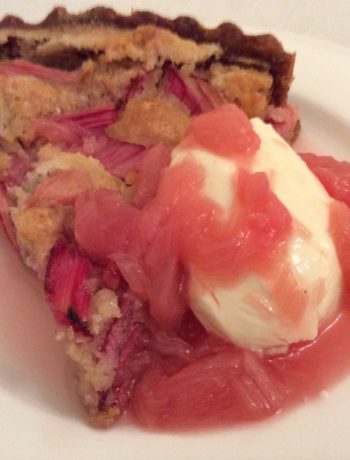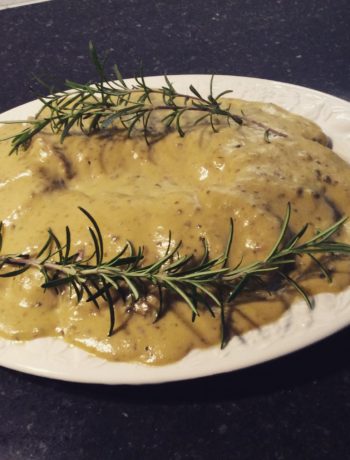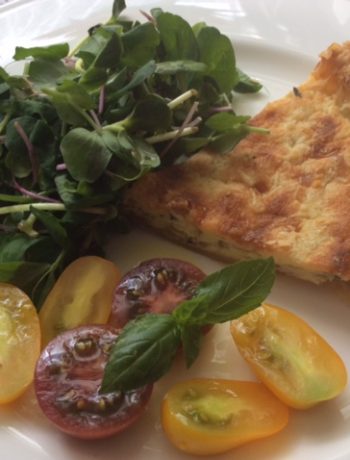When the first English asparagus hits the shops in late April, early May, it scarcely seems possible that one can have too much of a good thing. I know that one can now have asparagus all year round, but to me it is one of the last true seasonal foods left. I don’t buy anything but English and make the greedy most of the short season.
It is just so easy to prepare and no, it isn’t necessary to have a special pan for cooking it, although admittedly the stems take longer to cook than the tips. To get round this, I tend to steam rather than simmer, as I can prop up the tips on the side of the steamer and then poke them back down for the last two minutes.
If I roast them, there isn’t really any way round having crunchier tips than stems but as they still retain intense asparagus flavour, I tend to just accept that’s how things are. For such a wonderful food, small compromises are worth it, I find.
Asparagus has an interesting history and appears as an offering to the gods on friezes from circa 3000BC. The Romans loved it so much that their followers of the Greek Epicurus developed ways to dry it and in the high Alps, freeze it for the Feast of Epicurus which I think is our January. In the Attic calendar it was in Gamelion which is difficult to equate to our modern calendar as it was Lunar, not Solar. Anyway, if you can help me out on understanding that, please feel free!
Its first appearance in a cookery book is in the oldest surviving book, Apicius’ “De re coquinaria” from the third century AD. Galen mentions it as beneficial to health in the second century AD and then it disappears from writings until about 1410, when it appears in al-Nefzaoui’s famous “The Perfumed Garden”, although the earliest translation into English that I can find is 1886, by the famous explorer Richard Francis Burton. I found some interesting uses for Cinnamon in that, but we’ll stick with asparagus here! It is perhaps from al-Nefzaoui that asparagus gains its (clinically unproven!) reputation as an aphrodisiac and it is documented as having been a favourite of Madame de Pompadour……..
It also, of course, has another reputation which I will ask Marcel Proust to describe: “all night long, after a dinner at which I had partaken of [asparagus] they played at ……..transforming my chamber pot into a vase of aromatic perfume”. Always overdoes it, does Marcel Look what a madeleine did to him. Nice enough with a cup of tea, but I ask you….
There is also a perception that asparagus is difficult to pair with wine. My own view is that it difficult with a tannic or oakey wine, which according to my in-house Sommelier is because of the asparagusic acid (the culprit in making Proust go over the top), which is an organosulphur carboxylic compound. This is the point at which my eyes glaze over until Roberto returns to the wine itself, preferably opening one. Anyway, his advice is to go with Sancerre, Pouilly Fume or Riesling. My favourites are Italian Verdicchio or Orvieto, but take the time to search out decent ones. Italian whites seem to be marketed in supermarkets at the “I’ll drink anything as long as it’s cheap” consumer, so it may be better to find a reliable vintner who takes Italian wine seriously.
I think I will leave the last words on asparagus to Samuel Pepys. I am quite fond of Sam although he had some less than admirable attitudes and habits; you have to have some affection for a man who, when the Great Fire of London threatened his home, thought more of saving his Parmesan cheese than his silver: “So home, and having brought home with me from Fenchurch Street, a hundred of sparrowgrass, cost 18d. We had them and a little bit of salmon, which my wife had a mind to, cost 3s” April 20 1667.
Much as I adore our wonderful English sparrowgrass, after about four weeks, however, the joy of having simply cooked fresh asparagus with either melted unsalted butter or hollandaise begins to, well, not pall exactly but I begin to cast around for Other Things To Do. Much depends on how much effort I feel like putting in, so it might be as simple as roasting it, wrapped in Parma ham and finished with flakes of Parmesan. I also have three recipes which have become firm favourites, none of which is complicated and in fact, the base recipes can be re-used with other ingredients.
ASPARAGUS RISOTTO
Print RecipeIngredients
- 1 bunch English asparagus
- 75 g Carnaroli rice (Arborio can be used but I prefer Carnaroli as it produces a creamier risotto)
- 1 shallot, chopped finely (you can use onion; shallot gives a more subtle flavour)
- 1 clove fresh garlic, chopped finely (juicy fresh garlic is seasonal at the same time as asparagus but you can use dried)
- 1 litre hot vegetable stock (can use chicken but I prefer to keep the “purity” of a vegetable based dish)
- Unsalted butter
- Olive oil
- Finely grated Parmesan cheese - about 40g
- White wine or dry martini (optional!)
- Saffron, either the powdered or pistils (the crocus “threads”); if the latter, soak a couple in a couple of tablespoons of warm water
Instructions
Start by preparing the asparagus: snap off the bottom of the stem where it naturally wants to bend
Steam for about 5 minutes, drain and chop into short pieces about 1cm long; separate the stem bits from the tips as you will add them at different points
The snapped off end bits can be steeped in the stock to rev up the flavour, then discarded; I find this worth doing but don’t worry if you forget
Using a wide thick based pan (I use a Le Creuset casserole that is wide and shallow), add about 1tbsp of olive oil and a good knob of butter over a low to medium heat
Add the onion and garlic and soften but don’t let anything burn, keep stirring around
Add the rice and allow it to gain some transparency
Add the alcohol element - about a glassful of either a dry white wine or slightly less of dry martini
Turn up the heat slightly and keep stirring until the alcohol has evaporated and been absorbed
Add the stem pieces of the asparagus with the first ladleful of stock, stirring all the while and add the stock by the ladle, keeping an eye on the heat as you don’t want the risotto to burn
Adjust the heat as necessary to avoid boiling or burning
Add the saffron around this time but go easy with it, the risotto doesn’t need to glow in the dark!
After about four ladles of stock, start to check the rice - eventually you want slightly softer than al dente and don’t worry if you don’t use all the stock, or indeed if you need to top it up with hot water
When you get to the last couple of ladles of stock, add the asparagus tips and when the stock is absorbed, turn the heat off
This is the only tricky part of risotto, as you don’t want to end up with a stodgy mess, nor do you want a soup; the Italian phrase is that is should be “all’ onda” - like a wave, so you’re looking for the rice to have some movement but not sloshing around like a soup
At this point, stir in a couple of good sized knobs of unsalted butter and two or three tablespoons of finely grated parmesan (in truth, add to taste but try not to swamp the flavour of the asparagus)
Now taste for seasoning, adding salt and freshly ground black pepper to your taste
Serve more Parmesan at table
Notes
If you have the technique of risotto under your belt, you will open a huge reservoir of recipes that you can vary to suit what you have and indeed, what you like. Quantities can vary every time you make the same risotto, as small things such as changing the brand of rice you use can make a noticeable difference to the quantity of stock you need. I can advise you only to practice, tasting as you go and experiment with ingredients. Small things do make a big difference to flavour, such as using unsalted butter, buying good quality parmesan in a piece and grating your own and if you don’t have fresh stock, use a good powder like Marigold or a Kallo cube.




